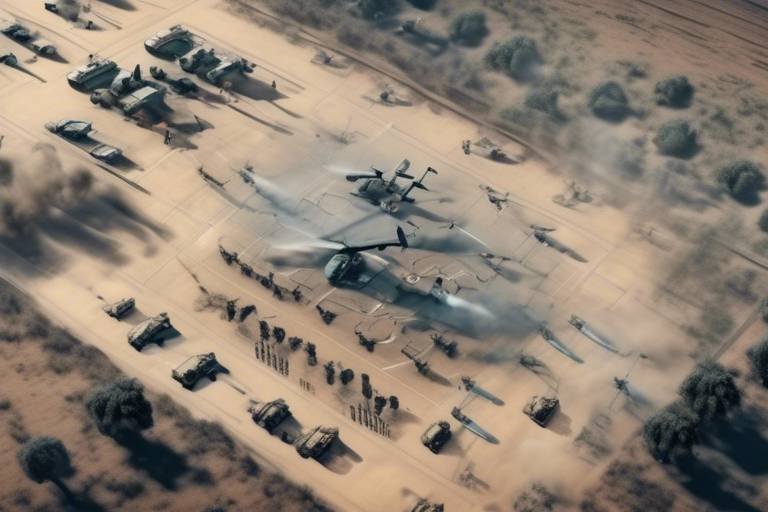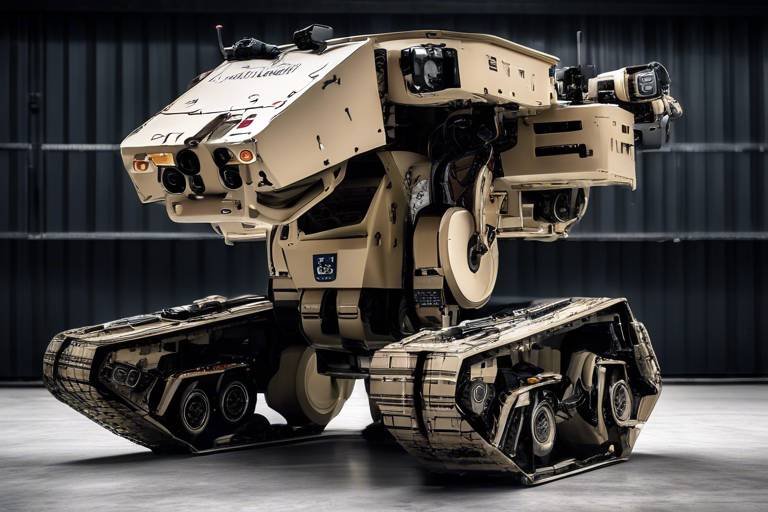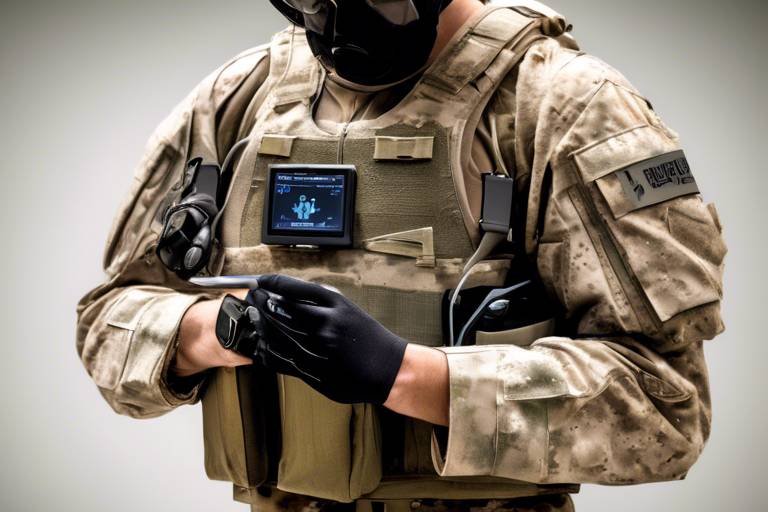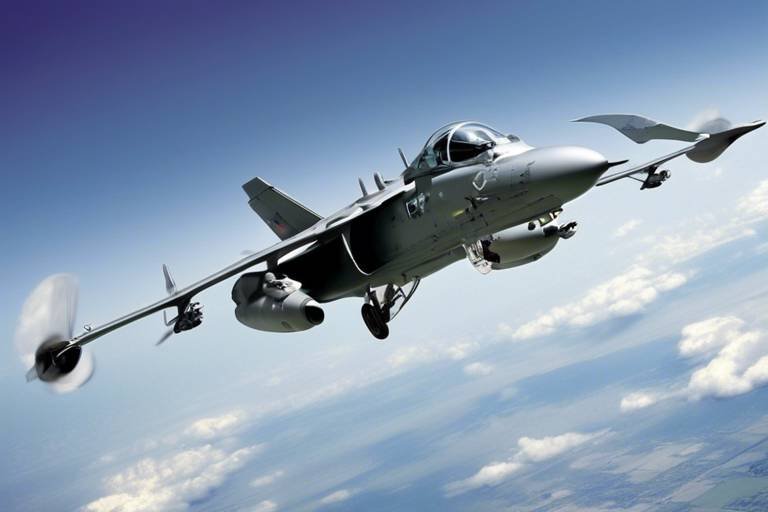How AI is Improving Military Intelligence Analysis
In recent years, the integration of artificial intelligence (AI) into military intelligence analysis has marked a significant turning point in how armed forces operate. Imagine trying to find a needle in a haystack—now, picture that haystack being a mountain of data generated every second from various sources. AI acts as the powerful magnet that not only helps in finding that needle but also makes the entire process faster, more efficient, and incredibly accurate. The ability to process vast amounts of information quickly has transformed military strategies and operational capabilities, leading to timely and informed decision-making.
One of the most compelling aspects of AI in military intelligence is its ability to analyze data from multiple channels. From satellite imagery and drone surveillance to social media and news reports, AI tools can sift through this information, identifying crucial patterns and insights that human analysts might miss. This not only enhances situational awareness but also enables military leaders to anticipate potential threats and respond proactively. In essence, AI is not just a tool; it is a game-changer in the realm of military operations.
Moreover, the use of AI is paving the way for a future where military personnel can focus on strategic tasks rather than getting bogged down by routine data analysis. By automating these mundane tasks, AI allows analysts to dedicate their time and expertise to more critical areas that require human judgment and intuition. This shift not only boosts efficiency but also enhances the overall effectiveness of military operations.
As we delve deeper into the transformative impact of AI on military intelligence analysis, it becomes evident that the technology is not without its challenges. Issues surrounding data privacy, the need for skilled personnel, and the risk of algorithmic bias are just a few hurdles that military organizations must navigate. Nevertheless, the potential benefits far outweigh these challenges, positioning AI as an essential component of modern military strategy.
- What are the primary benefits of using AI in military intelligence?
AI enhances data processing, improves decision-making speed, identifies patterns and anomalies, and automates routine tasks, allowing military personnel to focus on more strategic operations.
- How does AI handle unstructured data?
AI technologies, particularly Natural Language Processing (NLP), analyze unstructured data from various sources, such as social media and reports, providing valuable insights and context for military operations.
- What ethical concerns are associated with AI in military applications?
Ethical issues include accountability, transparency, and the potential for unintended consequences in decision-making processes, which require careful consideration as AI becomes more prevalent in military settings.
- What future trends can we expect in AI and military intelligence?
Emerging trends include advancements in autonomous systems and real-time analytics, which are expected to further enhance operational capabilities and strategic planning in military contexts.
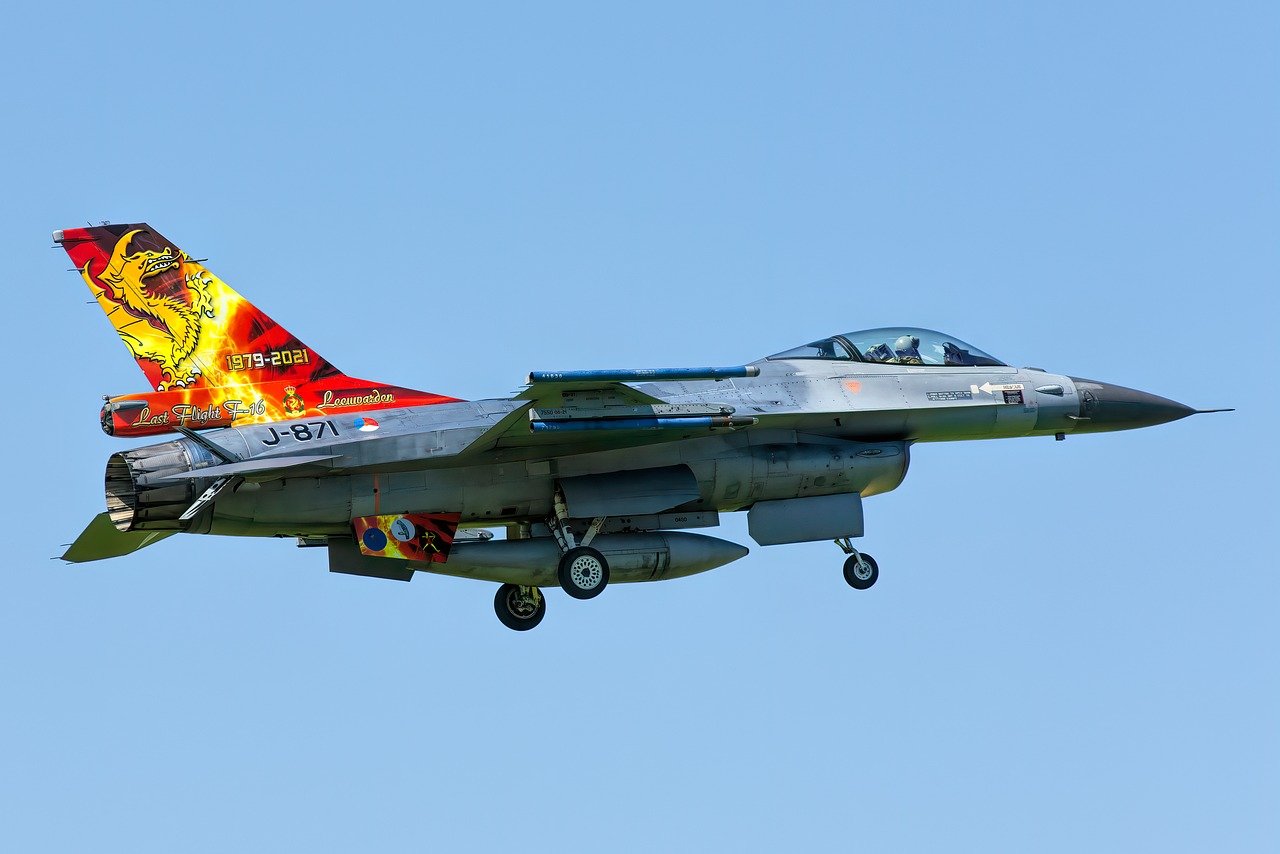
The Role of AI in Data Processing
In the vast landscape of military intelligence, the ability to process data swiftly and accurately is akin to having a superpower. With the introduction of artificial intelligence (AI), military analysts can now navigate through massive datasets with unprecedented speed and precision. Imagine trying to find a needle in a haystack, but with AI, that needle practically glows! This transformation is not just a minor upgrade; it's a game-changer that enhances decision-making in critical situations.
AI technologies, especially those focused on data processing, are designed to handle the complexities of modern warfare. Military operations generate an overwhelming amount of information from various sources, including satellite imagery, reconnaissance reports, and real-time battlefield communications. AI systems can quickly analyze this data, identifying trends and anomalies that might go unnoticed by human analysts. For instance, an AI algorithm can sift through thousands of satellite images to detect unusual troop movements or changes in supply routes, providing commanders with timely insights that are crucial for operational success.
With AI, the process of data curation becomes significantly more efficient. Traditional methods often require analysts to spend countless hours manually sorting through information, which can lead to delays in decision-making. However, AI algorithms can automate these tasks, allowing analysts to focus on interpreting the results rather than getting bogged down in the minutiae of data collection. This not only saves time but also reduces the potential for human error, leading to more reliable outcomes.
Moreover, AI's capability to integrate data from diverse sources enhances the overall situational awareness of military operations. For example, by leveraging machine learning techniques, military organizations can create comprehensive profiles of potential adversaries based on their historical behavior and current activities. This holistic view enables commanders to anticipate moves and devise strategies that are both proactive and reactive.
To illustrate the impact of AI on data processing in military intelligence, consider the following table that outlines key benefits:
| Benefit | Description |
|---|---|
| Speed | AI processes large datasets in a fraction of the time it takes human analysts. |
| Accuracy | Reduces human error by automating data analysis and interpretation. |
| Integration | Combines data from multiple sources for a comprehensive operational picture. |
| Predictive Analytics | Identifies patterns and trends to forecast potential threats. |
As we delve deeper into the role of AI in data processing, it's essential to recognize that this technology is not just about enhancing speed and accuracy. It's about fundamentally changing how military intelligence is gathered, analyzed, and utilized. The future of military operations hinges on the successful integration of AI, which promises not only to streamline processes but also to provide a strategic advantage on the battlefield.
- What types of data can AI analyze in military intelligence?
AI can analyze various types of data, including satellite imagery, social media content, reconnaissance reports, and sensor data. - How does AI improve decision-making in military operations?
AI enhances decision-making by providing timely insights, identifying patterns, and automating routine analytical tasks, allowing personnel to focus on strategic planning. - Are there any risks associated with using AI in military intelligence?
Yes, risks include data privacy concerns, potential algorithmic bias, and ethical considerations regarding accountability and transparency.

Machine Learning Algorithms in Intelligence
In the realm of military intelligence, machine learning algorithms serve as the backbone of data analysis, transforming how information is processed and interpreted. These algorithms are designed to learn from data, identifying patterns and making predictions without explicit programming. Imagine having a team of analysts who can sift through mountains of data in a fraction of the time it would take a human. That’s the power of machine learning! By employing advanced statistical techniques, these algorithms can uncover hidden insights that might otherwise go unnoticed.
One of the most significant applications of machine learning in military intelligence is in the realm of predictive analytics. For instance, by analyzing historical data on troop movements, supply chains, and conflict zones, machine learning models can forecast potential threats or operational needs. This predictive capability not only aids in strategic planning but also enhances the military's ability to respond proactively to emerging situations. Just picture a scenario where military leaders can anticipate enemy actions before they occur—this is not science fiction; it’s becoming a reality thanks to machine learning!
Moreover, machine learning algorithms excel in identifying anomalies within vast datasets. For example, they can detect unusual patterns in communications or movements that might signal a brewing conflict or an impending attack. This capability is akin to having a digital watchdog that never sleeps, constantly scanning for signs of trouble. The algorithms are trained on historical data, allowing them to recognize what “normal” looks like and flag anything that deviates from that norm.
To illustrate the impact of machine learning in military intelligence, consider the following table that outlines key applications and their benefits:
| Application | Benefits |
|---|---|
| Predictive Analytics | Forecasts threats and operational needs, enhancing strategic planning. |
| Anomaly Detection | Identifies unusual patterns in data, alerting analysts to potential issues. |
| Data Classification | Organizes vast amounts of intelligence data for easier analysis. |
| Operational Optimization | Improves resource allocation and mission planning through data-driven insights. |
Additionally, machine learning can automate the data classification process, categorizing intelligence reports, satellite images, and other data types into manageable segments. This automation is crucial for military analysts, as it allows them to focus on higher-level strategic tasks rather than getting bogged down in data entry and organization.
However, while the benefits of machine learning algorithms in military intelligence are profound, it’s essential to acknowledge the challenges that come with their implementation. Issues such as data quality, algorithmic bias, and the need for continuous training of models must be addressed to ensure that the insights generated are reliable and actionable. As we move forward, the collaboration between human intelligence and machine learning will be vital in creating a robust military intelligence framework.
- What are machine learning algorithms? Machine learning algorithms are computational models that learn from data to make predictions or identify patterns without being explicitly programmed.
- How do these algorithms benefit military intelligence? They enhance data processing, predictive analytics, anomaly detection, and operational optimization, leading to more informed decision-making.
- What challenges do machine learning algorithms face? Challenges include data quality, algorithmic bias, and the need for skilled personnel to manage and interpret the output.
- Can machine learning completely replace human analysts? No, while machine learning can automate routine tasks and provide insights, human judgment and expertise remain crucial in interpreting data and making strategic decisions.

Natural Language Processing Applications
In the realm of military intelligence, the ability to analyze vast amounts of unstructured data is crucial. This is where Natural Language Processing (NLP) comes into play, acting as a powerful ally for military analysts. Imagine having an assistant that can read thousands of social media posts, reports, and news articles in a matter of seconds, extracting valuable insights that could influence strategic decisions. NLP technologies are designed to do just that, transforming chaos into clarity.
One of the most significant applications of NLP in military intelligence is its capability to process and analyze unstructured data. Unlike structured data, which fits neatly into databases, unstructured data is messy and comes in various forms—think of everything from tweets to lengthy reports. NLP tools can sift through this data to identify trends, sentiments, and emerging threats. For instance, by analyzing social media conversations, military analysts can gain insights into public sentiment regarding specific issues or events, which can be vital for preemptive actions.
Moreover, NLP plays a significant role in enhancing operational context. When military personnel are deployed, understanding the local culture, language, and sentiments can make or break a mission. NLP-driven tools can translate and interpret local languages, allowing for more effective communication with local populations and allied forces. This ensures that the information exchanged is accurate and culturally sensitive, reducing the risk of misunderstandings during crucial operations.
Another fascinating application of NLP is its use in sentiment analysis. By evaluating the emotional tone of social media posts and online discussions, military organizations can detect potential unrest or hostile actions before they escalate. For example, if a sudden surge of negative sentiment about a government action is detected, it may signal an upcoming protest or conflict. This proactive approach allows military leaders to adjust their strategies accordingly, potentially averting crises before they arise.
To illustrate the impact of NLP in military intelligence, consider the following table that outlines some key applications and their benefits:
| Application | Description | Benefits |
|---|---|---|
| Sentiment Analysis | Analyzing social media for public opinion | Anticipate unrest and adjust strategies |
| Language Translation | Translating local languages for better communication | Improves rapport with local populations |
| Data Extraction | Extracting key information from reports | Enhances decision-making speed and accuracy |
In conclusion, NLP applications in military intelligence are not just a trend; they represent a fundamental shift in how data is processed and analyzed. By harnessing the power of NLP, military organizations can enhance their situational awareness, improve communication, and ultimately make more informed decisions. As these technologies continue to evolve, we can expect even greater advancements that will further empower military analysts in their critical roles.
- What is Natural Language Processing?
NLP is a field of artificial intelligence that focuses on the interaction between computers and humans through natural language. It enables machines to understand, interpret, and generate human language.
- How does NLP benefit military intelligence?
NLP helps military intelligence by analyzing vast amounts of unstructured data, improving communication with local populations, and providing insights into public sentiment and potential threats.
- Can NLP predict future threats?
While NLP can analyze current data to identify patterns and trends, it cannot predict future threats with absolute certainty. However, it significantly enhances the ability to anticipate potential issues based on existing data.

Sentiment Analysis for Threat Detection
In the realm of military intelligence, sentiment analysis plays a pivotal role in identifying potential threats before they escalate into serious issues. Imagine being able to read the mood of an entire population just by analyzing their online conversations. This is precisely what sentiment analysis allows military analysts to do. By utilizing advanced algorithms, military organizations can sift through vast amounts of social media content, news articles, and public forums to gauge public opinion and emotional responses to various events.
This technology is not just about understanding what people are saying; it's about interpreting nuances in their communication. For instance, a sudden spike in negative sentiment regarding a political figure can indicate unrest or dissatisfaction that could lead to protests or other hostile actions. By detecting these patterns early, military forces can prepare accordingly, deploying resources to mitigate potential threats before they manifest.
Moreover, sentiment analysis can be particularly effective in conflict zones where traditional intelligence-gathering methods may be limited. By analyzing sentiments expressed in local languages on social media platforms, military analysts can gain insights into the local population's feelings towards their presence, policies, or actions. This can lead to a more nuanced understanding of the operational environment, allowing for better decision-making and strategic planning.
Here are some key benefits of using sentiment analysis for threat detection:
- Early Warning System: By monitoring public sentiment, military organizations can receive early warnings about potential unrest.
- Resource Allocation: Understanding the mood of the populace allows for more efficient allocation of military and humanitarian resources.
- Enhanced Communication: Insights from sentiment analysis can guide communication strategies with local populations, fostering trust and cooperation.
However, while sentiment analysis offers tremendous potential, it is not without its challenges. The accuracy of sentiment analysis can be influenced by factors such as cultural context, sarcasm, and the rapid evolution of language on social media. Therefore, military analysts must approach the results with a degree of caution, ensuring they combine sentiment analysis with other intelligence sources for a comprehensive understanding.
In conclusion, sentiment analysis serves as a powerful tool in military intelligence, enabling forces to anticipate threats and understand the emotional landscape of populations. As technology continues to evolve, the integration of sentiment analysis into military operations will likely become more sophisticated, enhancing overall situational awareness and operational effectiveness.
- What is sentiment analysis? Sentiment analysis is a technique used to determine the emotional tone behind a series of words, helping to understand the attitudes, opinions, and emotions expressed in text.
- How does sentiment analysis help in military operations? It helps military organizations gauge public sentiment, anticipate potential threats, and improve communication strategies with local populations.
- What are the challenges of using sentiment analysis? Challenges include cultural context, sarcasm, and the need for accurate interpretation of rapidly changing language on social media.
- Can sentiment analysis predict future events? While it can provide insights into trends and potential unrest, it should be used in conjunction with other intelligence sources for accurate predictions.

Translation and Communication Enhancement
In the complex landscape of military operations, effective communication is paramount. The ability to convey accurate information swiftly can be the difference between success and failure. This is where AI-driven translation tools come into play, revolutionizing how military forces communicate with each other and with local populations. Imagine a scenario where troops are deployed in a foreign country, and they need to interact with civilians who speak a different language. Traditional translation methods can be slow and often lead to misunderstandings, which can escalate tensions. However, AI technology enables real-time translation, allowing soldiers to communicate effectively and efficiently.
These AI tools utilize advanced algorithms and vast databases to provide immediate translations of spoken and written language. This capability not only enhances operational effectiveness but also fosters trust between military personnel and local communities. For instance, when soldiers can communicate clearly and respectfully with civilians, it paves the way for smoother interactions and better cooperation, which is essential for mission success.
Furthermore, AI translation tools are not limited to just verbal exchanges. They can also translate important documents, reports, and intelligence briefings, ensuring that all parties involved are on the same page. This comprehensive approach to communication is vital in multi-national operations where forces from different countries collaborate. The use of AI in translation helps to minimize the risk of miscommunication, which can lead to operational delays or even conflict.
To illustrate the impact of AI on translation and communication, consider the following table:
| Feature | Traditional Methods | AI Translation Tools |
|---|---|---|
| Speed | Slow, often requiring human translators | Instantaneous, providing real-time translations |
| Accuracy | Subject to human error | Highly accurate with continuous learning |
| Scalability | Limited by the number of available translators | Can handle multiple languages simultaneously |
| Cost | High, due to the need for skilled translators | Lower, as AI reduces the need for human intervention |
Moreover, AI-driven translation tools are also equipped with features like contextual understanding, which means they can grasp the nuances of language that are often lost in literal translations. This is particularly important in military contexts where specific terminology and cultural references play a significant role. By providing translations that consider context, AI tools ensure that military personnel convey the right message in sensitive situations.
In conclusion, the enhancement of translation and communication through AI technology is a game-changer for military operations. It not only streamlines interactions but also builds stronger relationships with local populations, ultimately contributing to mission success. As AI continues to evolve, we can expect even more sophisticated tools that will further improve communication capabilities in the military sphere.
- How does AI improve translation accuracy?
AI uses machine learning algorithms to analyze vast amounts of language data, allowing it to learn and adapt for better accuracy over time. - Can AI translate multiple languages at once?
Yes, AI translation tools can handle multiple languages simultaneously, making them highly efficient in multi-national operations. - What are the limitations of AI translation tools?
While AI tools are highly effective, they may still struggle with idiomatic expressions or culturally specific references, requiring human oversight in some cases. - Are AI translation tools cost-effective?
Yes, they tend to be more cost-effective than traditional methods, as they reduce the need for human translators and can operate at scale.

Automation of Routine Tasks
In the fast-paced world of military operations, the ability to automate routine tasks is nothing short of revolutionary. Imagine a scenario where military analysts are bogged down with endless data entry, report generation, and basic analytical tasks. This not only drains their energy but also diverts their attention from critical decision-making processes. With the advent of AI technologies, these mundane tasks can now be automated, allowing personnel to focus on what truly matters: strategic planning and operational execution.
AI systems can efficiently handle repetitive tasks such as data collection, sorting, and preliminary analysis. For instance, consider an AI tool that can scan thousands of intelligence reports in a fraction of the time it would take a human analyst. This capability not only speeds up the processing time but also enhances accuracy, as AI algorithms can identify and flag inconsistencies or anomalies that may go unnoticed in manual reviews. By streamlining these processes, military organizations can ensure that their analysts are equipped with the most relevant and timely information available.
Moreover, the automation of routine tasks leads to significant cost savings. By reallocating resources from repetitive tasks to more complex analytical functions, military units can maximize their operational efficiency. This shift not only enhances productivity but also boosts morale among personnel who can now engage in more intellectually stimulating work. As a result, the military can cultivate a workforce that is not just reactive but proactive, anticipating challenges and responding with agility.
However, it's essential to acknowledge that automation is not without its challenges. While AI can handle many tasks, it is crucial to maintain a balance between human oversight and automated systems. After all, machines lack the nuanced understanding and contextual awareness that human analysts possess. Therefore, a hybrid approach that combines the strengths of AI with human expertise is likely to yield the best results.
As we look to the future, the potential for AI to transform military operations continues to grow. With advancements in machine learning and natural language processing, we can expect even greater levels of automation. The integration of AI into military intelligence will not only enhance efficiency but also improve the overall effectiveness of military strategies. The bottom line? Embracing AI in automating routine tasks is not just a trend; it's a necessity for modern military operations.
- What types of routine tasks can AI automate in military intelligence?
AI can automate data entry, report generation, preliminary data analysis, and even some aspects of decision-making processes. - How does automation improve operational efficiency?
By reducing the time spent on repetitive tasks, personnel can focus on strategic analysis and decision-making, leading to quicker and more informed actions. - Are there risks associated with automating military tasks?
Yes, while automation enhances efficiency, it is crucial to maintain human oversight to ensure contextual understanding and accountability. - What is the future of AI in military operations?
The future holds significant promise, with advancements in AI expected to further enhance automation, predictive analytics, and overall operational capabilities.

Challenges in Implementing AI
As promising as the integration of artificial intelligence (AI) into military intelligence analysis may seem, it does not come without its fair share of challenges. One of the most pressing concerns is data privacy. Military organizations handle sensitive information that, if mishandled or improperly accessed, could lead to severe security breaches or even jeopardize national security. The balance between leveraging vast amounts of data for insights and protecting that data from unauthorized access is a tightrope that military leaders must walk.
Another significant hurdle is the shortage of skilled personnel. The rapid evolution of AI technologies means that military forces need experts who are not only familiar with AI but also understand its application in a military context. This gap in expertise can slow down the implementation process and lead to suboptimal use of AI tools. Training existing personnel or recruiting new talent is essential but can be a time-consuming and costly endeavor.
Moreover, there is the issue of algorithmic bias. AI systems learn from historical data, which can inadvertently carry forward biases present in that data. For military intelligence, this could mean that certain groups or regions might be unfairly targeted based on flawed data interpretations. Such biases can lead to erroneous conclusions and potentially disastrous decisions in high-stakes environments. Therefore, ensuring that AI algorithms are fair and transparent is crucial for maintaining the integrity of military operations.
Additionally, the integration of AI into existing systems presents a technical challenge. Many military organizations rely on legacy systems that may not be compatible with modern AI technologies. This incompatibility can result in costly overhauls or the need for entirely new systems, which can strain budgets and resources. The transition period can also create disruptions in operations, making it imperative that military leaders plan carefully to minimize impact.
Lastly, the ethical considerations surrounding AI use cannot be overlooked. Questions about accountability, especially in cases where AI systems make autonomous decisions, pose a significant challenge. Who is responsible when an AI system makes a mistake? The military must navigate these ethical waters carefully to ensure that the use of AI enhances human decision-making rather than complicates it.
- What are the main challenges of implementing AI in military intelligence?
Data privacy, shortage of skilled personnel, algorithmic bias, integration with legacy systems, and ethical considerations are the primary challenges. - How does algorithmic bias affect military operations?
Algorithmic bias can lead to unfair targeting and erroneous conclusions, potentially resulting in disastrous decisions in critical situations. - Why is data privacy a concern in military AI applications?
Military organizations handle sensitive information, and any breach could jeopardize national security and operational effectiveness. - What steps can be taken to mitigate the challenges of AI implementation?
Investing in training, ensuring data quality, and focusing on ethical AI development can help address these challenges.
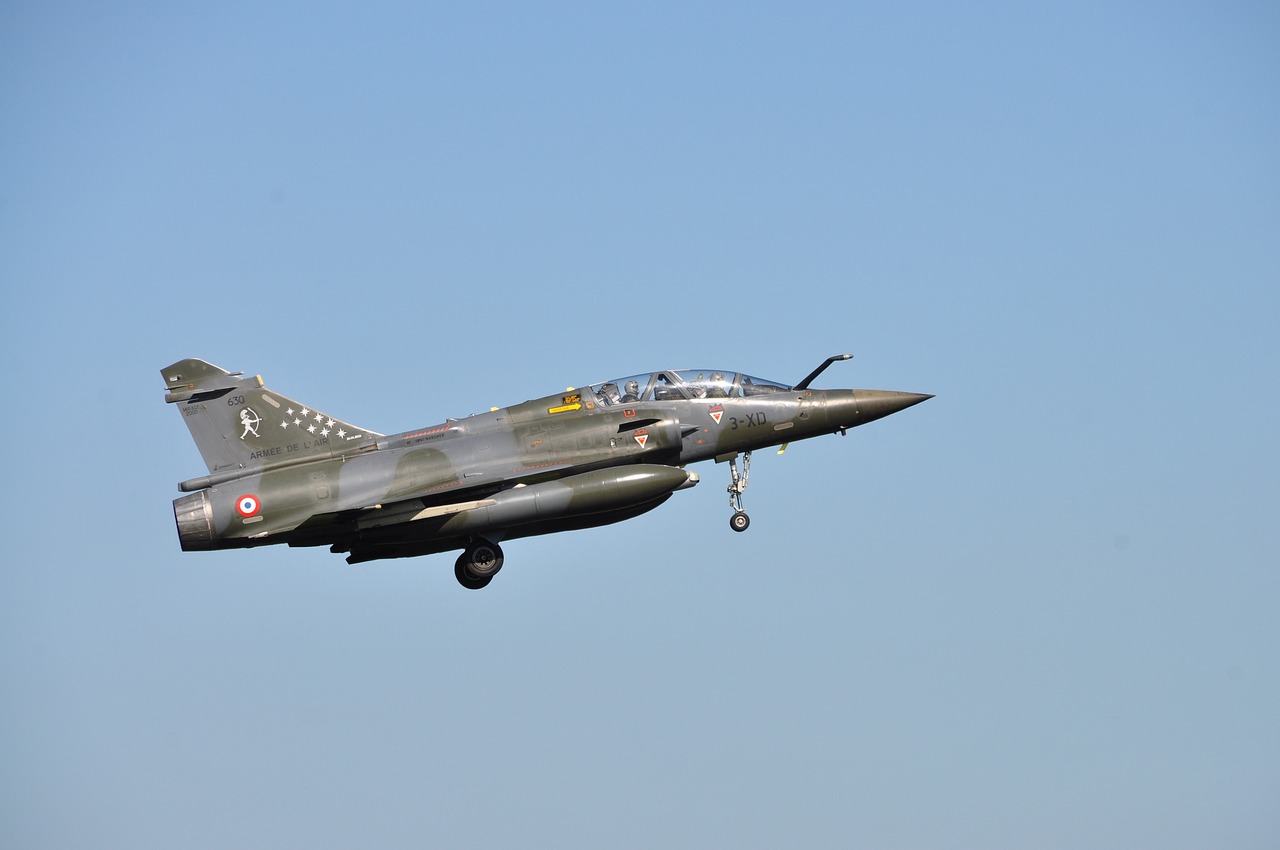
Ethical Considerations in AI Use
As we delve into the realm of artificial intelligence (AI) in military intelligence, it's imperative to pause and reflect on the ethical considerations that accompany such powerful technology. The integration of AI in military operations is akin to wielding a double-edged sword; it has the potential to enhance decision-making and operational efficiency, yet it also raises profound questions about accountability, transparency, and the potential for unintended consequences.
One of the primary concerns is the issue of accountability. When AI systems make decisions, who is responsible for those decisions? If an AI-driven operation results in unintended harm, can we hold anyone accountable? This question becomes even more complex when considering that AI systems learn and evolve over time, often making it difficult to trace back decisions to a specific human operator. The military must grapple with these questions to ensure that ethical standards are maintained.
Moreover, transparency in AI algorithms is crucial. Military personnel and decision-makers must understand how AI systems arrive at their conclusions. If the decision-making process is shrouded in mystery, it can lead to a lack of trust among soldiers and commanders alike. Transparency fosters confidence that the AI is functioning as intended and that its recommendations are based on sound data rather than flawed algorithms.
Another pressing issue is the potential for algorithmic bias. AI systems are only as good as the data fed into them. If the training data contains biases, the AI may perpetuate or even exacerbate these biases in its analysis. This can lead to discriminatory practices or misinterpretations of intelligence data, which could have dire consequences in military operations. It's essential for military organizations to actively work on identifying and mitigating such biases in their AI systems.
To address these ethical dilemmas, military organizations are increasingly establishing ethical frameworks and guidelines for the use of AI. These frameworks often emphasize the importance of human oversight, ensuring that AI serves as a tool to augment human decision-making rather than replace it. Furthermore, regular audits of AI systems can help identify potential biases and ensure compliance with ethical standards.
In conclusion, while the integration of AI in military intelligence offers remarkable benefits, it is vital to approach its implementation with a keen awareness of the ethical implications. By fostering accountability, transparency, and fairness, military organizations can harness the power of AI responsibly and effectively, paving the way for a future where technology and ethics coexist harmoniously.
- What are the main ethical concerns regarding AI in military applications?
The primary concerns include accountability, transparency, and algorithmic bias. These issues can impact decision-making and operational effectiveness.
- How can military organizations ensure accountability in AI decisions?
Establishing clear guidelines and frameworks for AI use, along with maintaining human oversight, can help ensure accountability in AI-driven decisions.
- What steps can be taken to mitigate algorithmic bias in AI?
Regular audits of AI systems and careful selection of training data can help identify and reduce biases in AI algorithms.
- Why is transparency important in AI systems?
Transparency helps build trust among military personnel and ensures that AI decisions are based on sound data rather than flawed algorithms.

Future Trends in AI and Military Intelligence
The future of military intelligence is on the brink of a remarkable transformation, driven by the rapid advancements in artificial intelligence. As we look ahead, several exciting trends are emerging that promise to enhance the capabilities of military operations significantly. One of the most noteworthy developments is the integration of autonomous systems, which are becoming increasingly sophisticated. These systems can operate with minimal human intervention, allowing for quicker responses to threats and more efficient resource allocation.
Imagine a battlefield where drones equipped with AI can analyze real-time data, make decisions, and execute missions without waiting for human commands. This kind of technology not only speeds up operations but also reduces the risk to human life. As these autonomous systems evolve, they will likely play a crucial role in surveillance, reconnaissance, and even direct engagement, fundamentally changing the landscape of military strategy.
Another trend to watch is the advancement in real-time analytics. With the vast amounts of data generated during military operations, the ability to process and analyze this information instantaneously is invaluable. AI algorithms can sift through data from various sources—satellite imagery, reconnaissance reports, and social media—providing military analysts with actionable insights at lightning speed. This capability ensures that decision-makers are not only informed but can also anticipate and react to potential threats before they escalate.
Moreover, the use of predictive analytics will become more prevalent. By leveraging historical data and machine learning, military intelligence can forecast potential conflicts and operational needs. This foresight allows for better planning and resource management, ultimately leading to more successful outcomes in military engagements. The ability to predict where and when a threat may arise can be the difference between success and failure in critical situations.
However, with these advancements come new challenges. As military intelligence becomes increasingly reliant on AI, issues such as data privacy and algorithmic bias must be addressed. Ensuring that AI systems are transparent and accountable is essential to maintaining trust in military operations. The question of how to balance technological advancement with ethical considerations will be a significant topic of discussion among military leaders and policymakers.
In conclusion, the future of AI in military intelligence is filled with potential. The combination of autonomous systems, real-time analytics, and predictive capabilities will undoubtedly enhance operational effectiveness. As we move forward, it will be crucial to navigate the accompanying challenges thoughtfully, ensuring that the integration of AI serves to protect and empower rather than complicate military endeavors.
- What are autonomous systems in military intelligence?
Autonomous systems refer to machines or technologies that can operate independently without human intervention, often utilizing AI to make decisions based on data analysis. - How does real-time analytics benefit military operations?
Real-time analytics allows military personnel to process and analyze data instantaneously, enabling quicker decision-making and more effective responses to emerging threats. - What ethical concerns arise from using AI in military applications?
Ethical concerns include accountability, transparency, and the potential for algorithmic bias, which can affect decision-making processes and outcomes. - Will AI replace human intelligence analysts?
While AI will enhance and support human analysts by automating routine tasks and providing insights, human judgment and strategic thinking will still be essential in military intelligence.
Frequently Asked Questions
- How does AI enhance military intelligence analysis?
AI enhances military intelligence analysis by processing vast amounts of data quickly and accurately. This allows military analysts to make timely decisions based on comprehensive insights, improving overall operational efficiency.
- What role do machine learning algorithms play in intelligence?
Machine learning algorithms are essential for identifying patterns and anomalies in intelligence data. They enable predictive analytics, which helps forecast potential threats and operational needs, giving military strategists a crucial edge.
- Can AI tools analyze social media for military purposes?
Yes, AI tools, particularly those utilizing natural language processing (NLP), can analyze unstructured data from social media. This analysis aids in understanding public sentiment and potential threats, allowing for proactive measures to be taken.
- What is sentiment analysis and how is it used?
Sentiment analysis gauges public opinion by analyzing social media content. In military contexts, it helps anticipate unrest or hostile actions, allowing for better preparedness and response strategies.
- How does AI improve communication in military operations?
AI-driven translation tools enhance communication with allied forces and local populations by ensuring accurate information exchange. This reduces the risk of misunderstandings during critical operations, leading to more effective collaboration.
- What are the challenges of implementing AI in military intelligence?
Integrating AI into military intelligence faces several challenges, including data privacy concerns, the necessity for skilled personnel, and the risk of algorithmic bias that could affect decision-making outcomes.
- Are there ethical concerns related to AI in the military?
Absolutely! The use of AI in military applications raises ethical questions regarding accountability and transparency. There are concerns about unintended consequences in decision-making processes that could arise from relying on AI technologies.
- What future trends can we expect in AI and military intelligence?
Future trends in AI technology promise to further revolutionize military intelligence. Advancements in autonomous systems and real-time analytics are expected to enhance operational capabilities and improve strategic planning.





